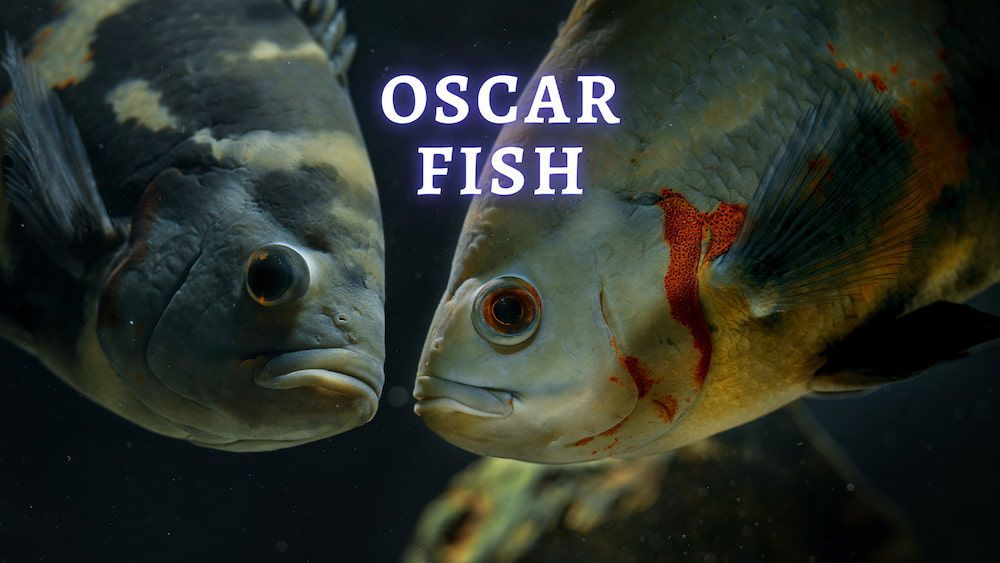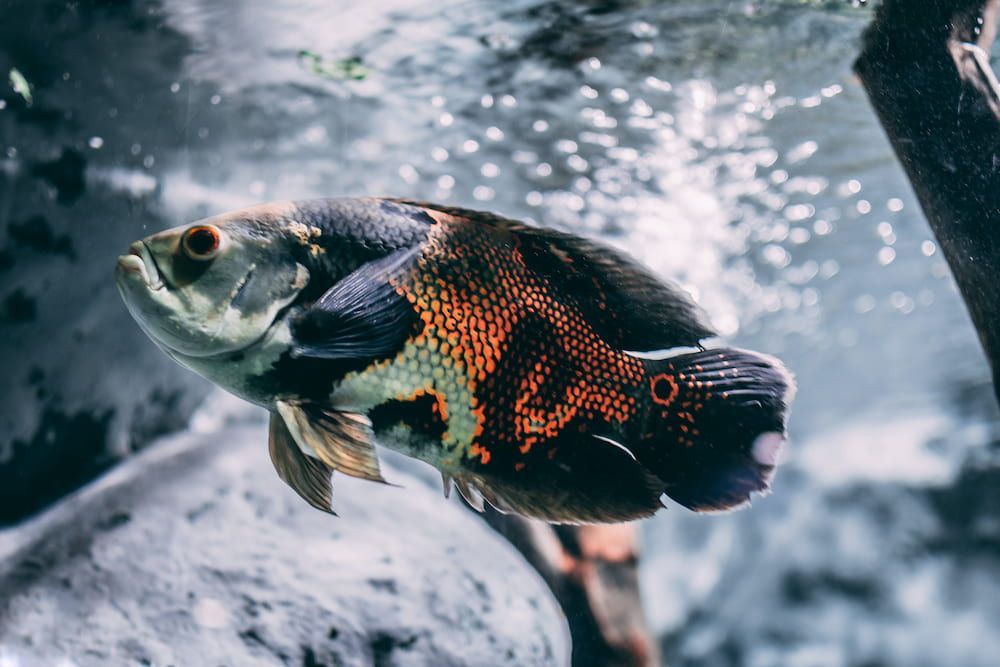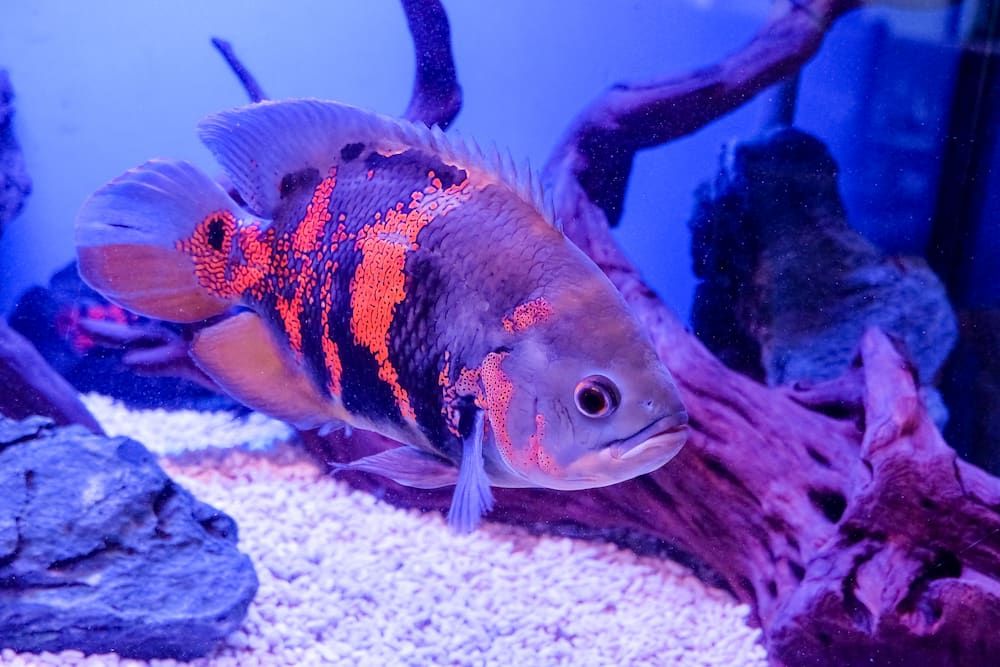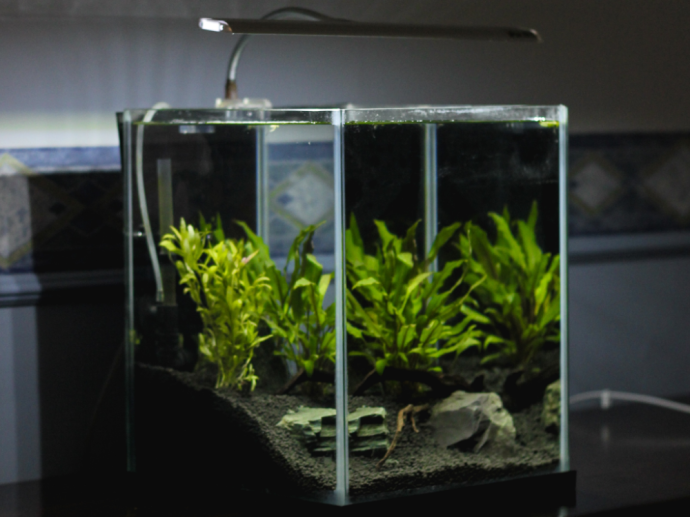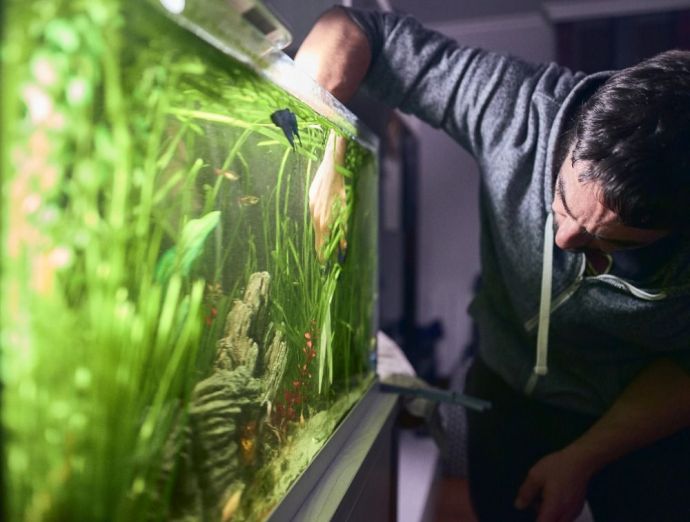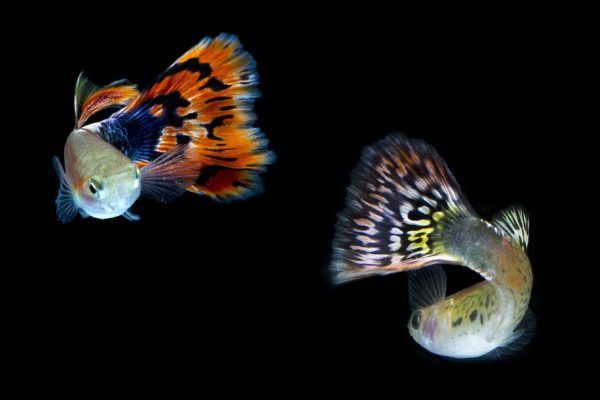Oscar Fish: Overview and Care Guide
Written by:
Author: Seb Jenkins
Seb is a professional SEO writer with a degree in Journalism, he has five years of experience in writing and editing. Seb specializes in topics like dog and cat breeds, aquarium guides, and pet care. He is passionate about educating and entertaining animal owners worldwide. In his spare time, Seb enjoys writing fiction novels.
View all 83 articlesLearn about our editorial process and veterinary review board.
Viewed: 63
Updated on: 06/08/2023
If you want a new fish to add to your aquarium, you have come to the right place! And we can certainly understand why you are researching the Oscar Fish, thanks to their beautiful coloring and markings. Before introducing a new pet to your tank, it is essential to know precisely what they need from you to live a healthy life, especially if you already have a pet in the aquarium. Fortunately, we have compiled an all-you-need-to-know guide on Oscar Fish to help you make that decision!
Appearance
Oscar Fish or Astronotus ocellatus are known for their iconic orange and black/brown markings, which is why they are also often referred to as Tiger Oscars and Marble Cichlids.
TheAstronotus ocellatushas a large oval body and are on the stockier side when compared to most aquarium fish. Everything about them is large, including their mouths, eyes, and head. They even have big fins that look like fans, making them longer. Unlike some pets, the Tiger Oscar male and females are exactly the same regarding appearance.
The colors of an Oscar Fish start out dull and dark when they are first born, but the colors become more vibrant with age. The black markings also turn gray when the pet ages and colors can become dull again if sick or under stress.
While the Tiger Oscar is the most common variant by far, there are some other pets to watch, each with their own colors and markings. Red Oscars feature fire-red bodies. Albino Oscars are white with red markings. Blue Oscars have blue patterns. Black Oscars have black bodies and white bands. White Astronotus ocellatus are pale and pink in color. Green Oscars are green with yellow coloring.
Oscar is between one and three inches when they are young but quickly grows around an inch per month until they are almost one foot long. In captivity, an adult Astronotus ocellatus is usually 11-12 inches, although some have been known to reach 16 inches and more than three pounds.
Behavior
While beautiful, they are only sometimes recommended for first-time owners as they can be tricky to manage due to their territorial and aggressive nature. As such, you must be careful when choosing which pet to put in the tank with them; otherwise, you may end up with lots of fish fights.
The Astronotus ocellatus will readily chase other fish, attack them, and bump into them if they feel their space is being invaded. They will even fight with other Oscar Fish, which only increases during mating season.
They are also one of the most intelligent species of aquarium pets. If you look into your tank, you will likely see the Oscar Fish swimming around with plenty of purposes, and they will even recognize you, such is their intelligence. This is why some people often call them River Dogs because you can even hand-feed them.
Due to their size and love of swimming, the Astronotus ocellatus does require a lot of open space and spend most of their time in the center of the tank; however, they will dip down to the base of the aquarium in search of food. They are social pets but appreciate caves and other hiding spots for some alone time. The Oscar Fish is mainly awake during the day and sleeping at night.
Oscar Fish Care and Tank Requirements
Oscar is tough and easy to care for, although they can be aggressive and territorial, which may be tricky for a first-time owner. We recommend only purchasing Astronotus ocellatus if you have a large fish tank with lots of open space, as they are big pets who like to swim.
The best temperature range for Oscar aquarium is between 72-80 °F or 22-27 °C. However, they can survive at 68-82 °F (20-28 °C). This tropical fish from the Amazon River basin is, therefore, suited to low water temperatures.
The immune system of the Astronotus ocellatus can become compromised when the temperature drops too low, which increases the risk of infection and illness. Anything below 12.9°C (55.22°F) is considered lethal for this breed. Similarly, if the temperature is too high, there will not be enough oxygen in the tank for them to live healthily. Therefore, you should always invest in a good water heater and install a thermometer to monitor the exact temperature.
The pH in your tank for Oscar should be between 6.8 and 7.2, although they may be able to survive between 6 and 8 due to their wider pH tolerance. However, if you want your Astronotus ocellatus to breed, you should stick to the optimal range. If you change your pH levels, you should do so slowly over time.
As we explained above, a large fish calls for a large tank, especially if you have a few Oscar Fish and other creatures. For an adult Oscar, you should look at a tank size of at least 75 gallons, but the optimum is 75 or above. If you have multiple Astronotus ocellatus, add 20-30 gallons per pet. We recommend a 125-gallon tank or even more significant for multiple Oscars.
Oscar often grows faster and more significant than owners expect, so it will become too large for a smaller tank in no time. Please be aware and prepared that you will be taking on a pet that may grow up to a foot in length, so you must be able to accommodate that.
It would help if you also spared a thought for the shape of your tank. Narrow tanks are not ideal for big fish like the Oscar Fish because they need help to turn around. If your pet is 12 inches long, then the tank should be plenty wider than that to allow them to turn without hitting the glass.
Oscar requires a good filter, such as a canister aquarium filter. They eat a lot and produce a lot of waste, so your tank must cope. These pets prefer low to moderate lighting, set on a cycle that matches our ordinary day and night schedule. Standard aquarium lighting should be fine, while LED lights can make the Astronotus ocellatus colors pop. It would help if you looked to provide 8-12 hours of light per day.
Oscar is big and strong enough to move things around the tank, including decorations. Therefore, most owners choose to include minimal decorations. We recommend a cave for them to relax in and maybe a large rock or piece of wood in the center of the tank. Too much decoration takes away their nice open space to swim in.
READ MORE: How To Make Tap Water Safe for Fish
Tank Mates
As explained above, Astronotus ocellatus can get territorial and aggressive when they feel like another fish is invading their space. As such, finding ideal tank mates can seem like a tough task. Of course, the best idea with fish like these is often to pair them up with the same breed, so buy another Oscar Fish. That being said, Oscar Fish can still fight during mating season.
If you want to keep your Oscar with other species in the same tank, you must pick the tankmates carefully. An aggressive and territorial fish in an aquarium tank is usually a recipe for some fighting, and it is tough to guarantee no aggression in this scenario.
It would be best if you had a pet that is big enough to stand up to the Oscar but not so big it will look to pick a fight. They won’t last a minute if you keep small fish like goldfish in a tank with an Astronotus ocellatus.
Some good tankmate options for Oscar include Bichirs, Banded Leporinus, Blue Acara, Plecos, Jack Dempsey Fish, Black Convict Cichlids, Green Terrors, Silver Dollar Fish, Firemouth Cichlids, Arowanas, Demon Earth Eaters, Chocolate Cichlids. The aggressive nature of the cichlid often cancels out that of the Astronotus ocellatus, which is why they appear so much here.
It is important to remember that, no matter which tankmate you choose, you should always keep a close eye on them during the early stages of introducing them to your pet. Fish have individual personalities, and some may mix better than others. Sometimes, two fish just do not get along.
What Food does Oscar Fish Eat in the Wild?
Oscar Fish live in rivers and waters around the Amazon basin and like to feed on small insects and crustaceans, among other things. They are omnivores and hunt opportunistically whenever something swims its way. They also eat a combination of seeds, fruit, and plants.
Oscar Fish are known to feast on smaller fish and can use their short bursts of speed for hunting. However, while they eat fish occasionally, it is not a standard part of their diet or a primary food source.
READ MORE: The 15 Best Fish Tanks
Best Food for Oscar Fish
Fortunately, there is a vast array of food that you can use to keep your Oscar Fish fit and healthy. Their nutritional needs can often be met with a high-quality brand of Scar pellet food or cichlid pellet food, as well as fresh food, live food, and frozen food. We recommend any blend of the following:
- Bananas
- Freeze-dried shrimp
- Peas
- Snails
- Fresh shrimp
- Mealworms
- Earthworms
- Clams
- Scallops
Best Food for Oscar Fish Growth
Oscar Fish need a diet with high protein for optimal healthy growth. As we said above, the Astronotus ocellatus is an omnivore, but younger fish do need more protein to stimulate growth, so live fish food is a great option, such as worms.
White worms have great protein and fat in them, which is perfect for growth in a young Oscar Fish. The same can be said of brine shrimp.
A young Oscar Fish can grow around an inch a month, up to a foot in length when they are fully grown. However, this growth rate can depend on the feeding pattern you implement. We recommend feeding younger Oscars two or three times a day with different types of food, instead of just one large meal.
Once your young peth gets to around 4-6 inches in length, you can drop their meals down to one or two per day. And once they reach 7 or 8 inches, you can consider your Oscar an adult, even if they are still growing. Just keep an eye on their weight and adjust your meals if they are carrying too much fat. You can feed them once a day now too.
Breeding
Let’s start with the difficult truth, Astronotus ocellatus are very difficult to breed. There is no way around it. If you are attempting to breed them, good luck! In order to pull off a successful Oscar Fish breeding, you will need a lot of experience and a healthy dose of luck. However, it’s not all doom and gloom because it is still possible.
One of the biggest issues with Astronotus ocellatus is just how picky they are when it comes to choosing a mate. If your Oscar Fish don’t like the look of each other, the breeding mission will fail at step one. Having said that, there is a simple way around this problem, and that is to buy two Oscars who have already mated in the past – although this requires more money and time.
Like many animals, Oscars mate at a particular time of year, so you will need to mimic the conditions of that mating season. Lower the water temperature by a few degrees and carry out partial water changes every couple of days.
When they are ready to mate, your Oscars will start acting differently. They like to shake their fins and open their gills when the time comes, which is completely normal so do not be alarmed.
It is a good idea to add rocks to the bottom of your tank, so they have a space to lay their eggs if it comes to that. You should put these rocks in right before the breeding process. Essentially, they treat the rocks like a dish to hold their eggs.
Once the eggs are laid, both Astronotus ocellatus will likely spend most of their time around the rock to keep an eye on things until it’s time to hatch. The females often move substrate around to make sure the eggs are clean.
Two or three days after being laid, the eggs will hatch, and the youngsters will be born. You should take them out of the main tank and put them in a new one while they grow. Keep a close eye on them for a few days and once they start to get a little bigger you can put them into a bigger tank.
Oscar Fish Types
There are so many Oscar types out there for you to choose from, and we recommend researching them to see which catches your eye. They include:
- Tiger
- Veiltail
- Short body
- Black tiger
- Blue tiger
- Lemon
- Blue
- White tiger
- Copper
- Albino Oscar
- Lutino
- Red
- Golden
- White
Should You Get an Oscar Fish for Your Aquarium?
Oscar Fish is an excellent choice if you are purchasing a new tank and want to add just one species to it. As long as you make sure the tank is big enough to hold one or two Oscars, you should be good to go, even if they are a little aggressive at times.
However, if you are a beginner and already have fish in your tank, adding an Oscar to the mix may be a risk. There is a good chance they may eat your smaller fish and try to fight any bigger ones. They do not take a lot of care, but they are aggressive.
So, it really depends on your set-up and what you want to do for them. If you find something that works for you and the Oscars, you will welcome a beautiful and colorful fish into your home.
Oscar Fish FAQs:
How many Oscar fish can stay together?
You can keep multiple Oscar Fish in the same tank. In fact, it is the best way to house an Oscar Fish with another fish, as they do tend to eat or fight many other species. Having said that, if you have lots of Oscars in one tank, there will be a risk of fighting during mating season. You also need to make sure the tank is big enough to house the number of Oscars you have.
Is Oscar fish a good pet?
An Oscar Fish is a great pet under the right circumstances. They are so clever that they can recognize their owners and can even be fed by hand. However, they are also aggressive towards some other fish, which can be a challenge when it comes to tankmates. They can make great pets if you put an Oscar Fish or two into their own tank.
What size tank do I need for 2 Oscars?
For one Oscar Fish, you should be looking at a tank of at least 55 gallons, but the optimum is 75 or above. If you have multiple Oscar Fish, then add 20-30 gallons per fish. We recommend a 125-gallon tank or even bigger for multiple Oscar Fish.
What size tank do you need for the Oscars?
For one Oscar Fish, you should have a tank of at least 55 gallons, but the best option would be 75 or above. If you have multiple Oscar Fish, then add 20-30 gallons per fish onto that total. A 125-gallon tank or even bigger is best for multiple Oscar Fish.
 Freshwater Fish A Guide to the Black Moor Goldfish: Tank Setup, Temperatures and Care Routine
Freshwater Fish A Guide to the Black Moor Goldfish: Tank Setup, Temperatures and Care Routine - 61
- 0
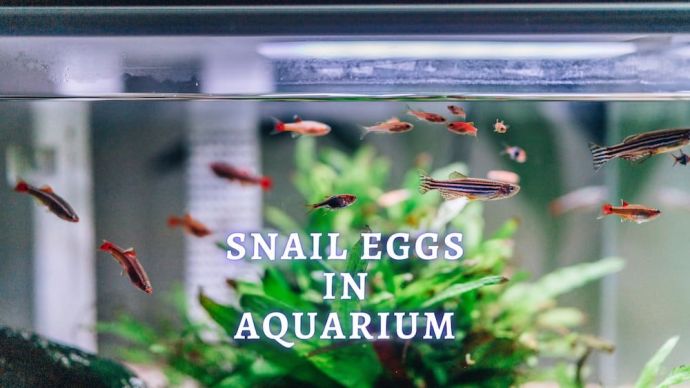 Freshwater Fish Snail Eggs in Aquarium and What to Do with Them and How to Remove if Needed
Freshwater Fish Snail Eggs in Aquarium and What to Do with Them and How to Remove if Needed - 47
- 0
 Freshwater Fish 15 Best Fish for Outdoor Ponds: Best and Easiest to Take Care Of
Freshwater Fish 15 Best Fish for Outdoor Ponds: Best and Easiest to Take Care Of - 57
- 0









